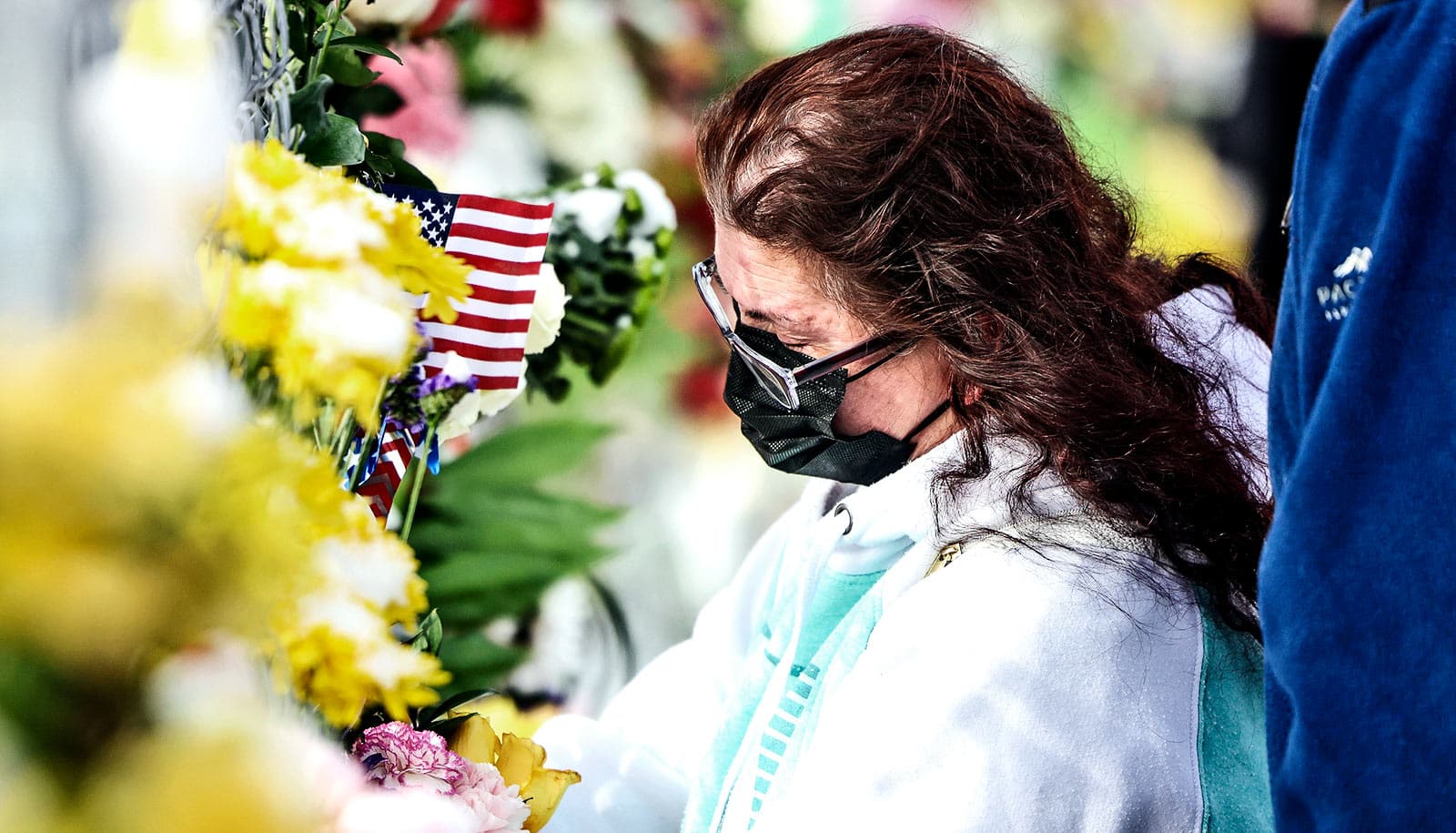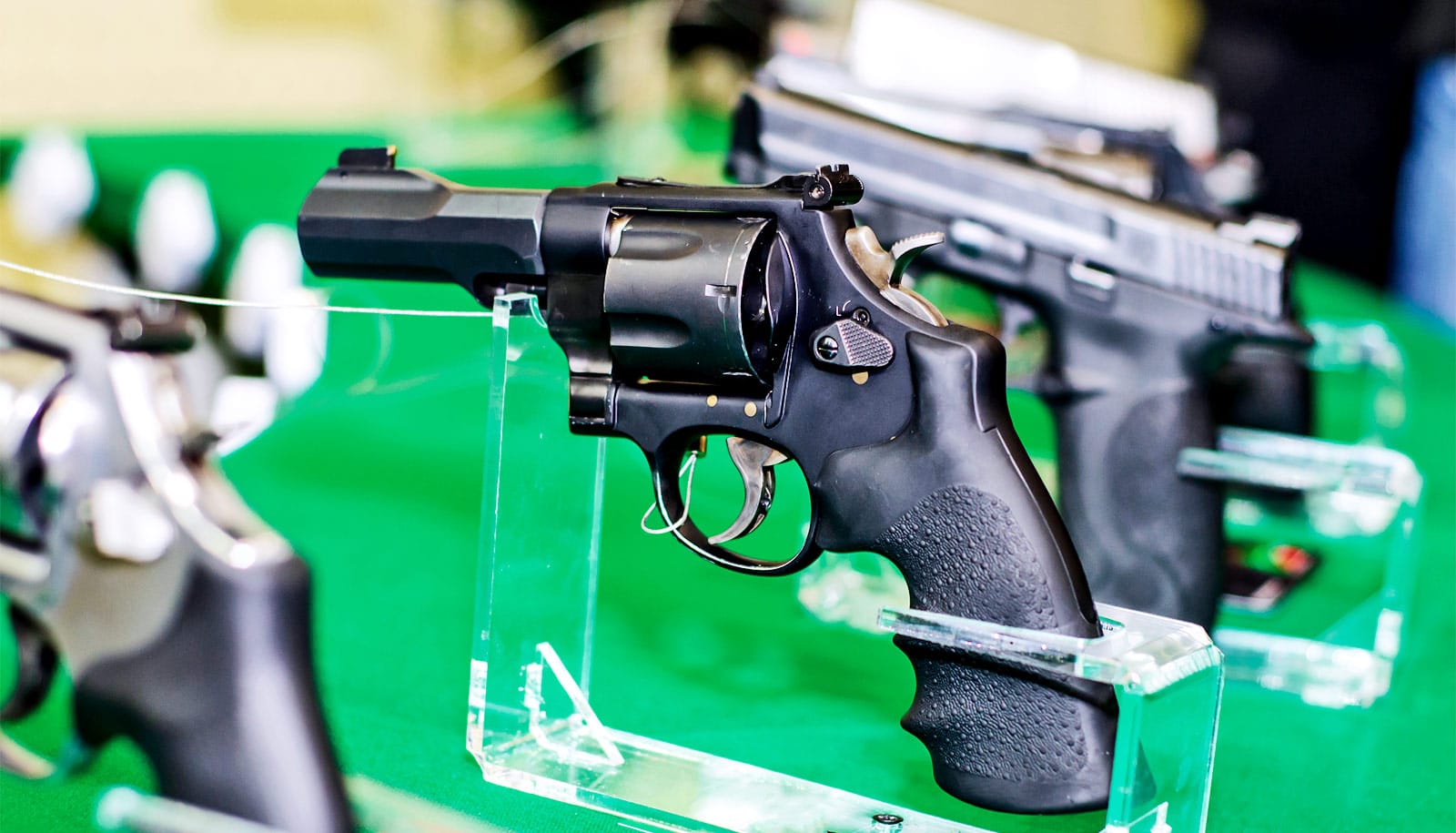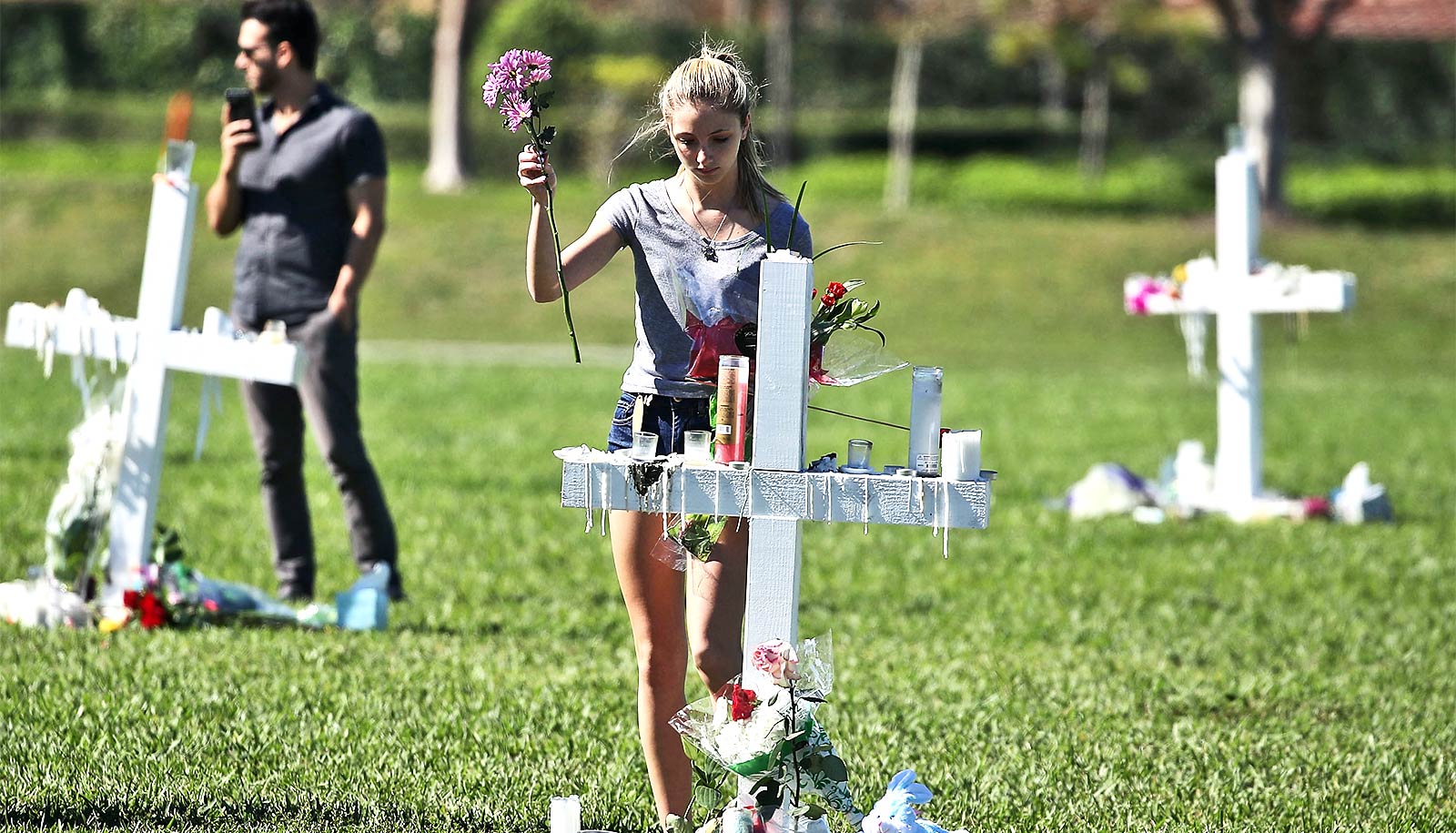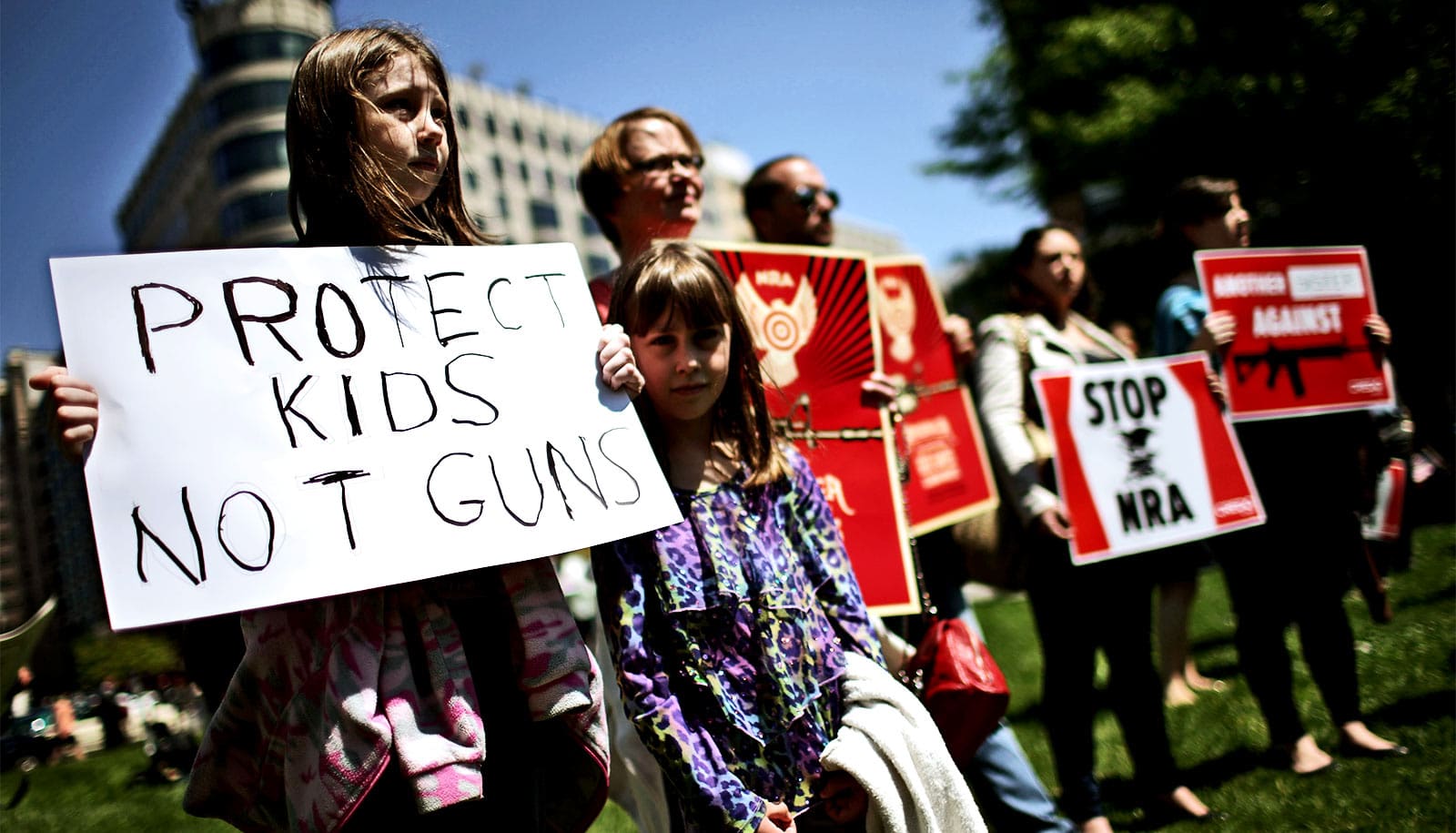As Americans emerge from the COVID-19 pandemic, two mass shootings within a week have made clear the reality of the other US epidemic: gun violence.
On March 16, a gunman killed eight people at three Atlanta-area massage businesses, and on March 22, 10 people were gunned down in a Boulder, Colorado grocery store.
Here, John J. Donohue, III, a professor of law at Stanford University, who was an expert witness for the city of Boulder in its assault weapons ban case, discusses mass shootings in the US, the challenges facing police when confronting powerful automatic weapons, and the prospect of gun control laws:
A police officer was shot and killed during the mass shooting in Boulder by a shooter who had an assault weapon. Can you talk about the dangers first responders face when they arrive to a mass shooting?
One of the most dangerous acts that any police officer can take is approaching a mass shooting incident. You may recall that in the Parkland High School shooting in Florida, the armed security guard did not charge into the building and was severely criticized, but facing a shooter with an assault weapon and a high-capacity magazine is a shockingly dangerous activity, which in part explains why armed civilians rarely play any positive role in these deadly episodes.
An FBI report on 160 active shooter incidents from 2000-2013 found that “Law enforcement suffered casualties in 21 (46.7%) of the 45 incidents where they engaged the shooter to end the threat. This resulted in 9 officers killed (4 of whom were ambushed in a shooting) and 28 wounded.” In other words, in about half of these cases, at least one officer who engaged the shooter was shot.
Are America’s police outgunned by criminals, particularly mass shooters?
There is little question that an officer with a handgun is outgunned against someone with an AR-15. But the problem goes beyond assault weapons since the gun industry is trying to upgrade the lethal capacity of many weapons.
Recall that in November 2018 the police officer who charged into a crowded bar to stop the Thousand Oaks massacre was struck by 6 bullets—5 fired by the gunman and 1 fatal shot tragically fired by a California Highway Patrol officer. Moreover, the first person of the 12 killed by that gunman was the armed security guard in the bar. The mass killer, a former Marine, used a Glock handgun with a laser scope, loaded with high-capacity magazines.
Of course, one consequence of the growing problem with mass shootings is that police departments have spent millions to enhance their own lethal weaponry capacities.
Are our police officers concerned about the number of Americans who own, and often legally carry in public, a wide range of firearms? And do they shoot more frequently?
Mass shootings are part of the larger problem that police are scared to death of being targets of gun violence in America’s gun-saturated environment. The combination of the huge number of guns and lax regulation poses a significant challenge for law enforcement.
Just as American criminals shoot faster because of the dangers posed by an armed population, so do American police, who legitimately fear the prospect of facing an armed assailant.
As a result, American police officers kill at far higher levels than their counterparts in other affluent nations. Consider this striking fact: in the first 24 days of 2015, police in the US fatally shot 59 individuals, which was greater than the comparable number of 55 shot by police in England and Wales, combined, over the past 24 years.
The weapon used in the Boulder shooting was an AR-15-style rifle—bought after the Colorado State court struck down the city’s ban. Can you talk about that? How effective are local and state laws, particularly when Americans can drive to another state to stock up on firearms?
The city of Boulder actually passed a law banning assault weapons and high-capacity magazines beyond what the state has prohibited. The law was immediately attacked in court, and I was an expert witness for the city of Boulder, testifying that its urban character and large number of late adolescents and young adults elevated its risk from gun violence and mass shootings.
Unfortunately, the city lost the case on March 12, when the court struck down the Boulder prohibition on the sale, possession, and transfer of assault weapons and high-capacity magazines.
The Boulder shooter bought his assault weapon soon after the court decision and committed the mass murder of 10 people on March 22, 2021. But it is clearly the case that the smaller the geographic area to adopt a ban, the more easily it is circumvented, which is why state or federal action will always be more effective than county or city measures.
We had two mass shootings within one week. How many mass shootings are there typically in a year in the US—and is it a high number compared with other western nations?
The pandemic gave us a break from mass shootings but now that things are opening up we will probably return to the increasing pace of recent years, unless significant legislative steps are taken to reduce their numbers. It turns out that there are many different definitions of mass shootings, so to know the number, one has to specify the precise definition.
For example, if one looks at public mass shootings that kill four or more individuals (not including the shooter), we have gone from about 3 shootings every two years during the decade of the federal assault weapons ban (ending in 2004) to more than 5 every year in the last five years. Even worse, these mass shootings killed only 89 during the decade of the assault weapons ban but have killed 333 in the last five years as the most lethal weaponry has proliferated.
Under a more expansive definition in which a shooter wounds or kills 4 or more individuals, we are roughly at the pace of one such episode per day in the United States, and no other developed country in the world comes anywhere close to that pace.
With our 19,380 gun homicides in 2020 we stand at the top of the developed world in overall assaultive deaths by firearm per capita by a very wide margin—although we do look better if you compare us to Honduras, the Ivory Coast, or Yemen. At the other end of the spectrum, note that more people died by firearm in the one mass shooting in Boulder this week (10) than will likely die this year in Japan from all firearm shootings (and they have more than one-third our population).
President Joe Biden has called for reinstatement of the assault weapons ban and beefing up of background checks. If Congress can pass such measures, which isn’t assured, how much would these laws help?
It would certainly help to reinstate the federal assault weapons ban, which also banned high-capacity magazines, and to require universal background checks. Of course, it is a tragedy that we had a federal assault weapons ban in place for a decade and ended it: reinstating one now leaves us in worse shape than we were when the ban ended since millions of assault weapons are now on the streets.
Still, the mass shooting problem will only get worse until we address it as Biden has suggested. At least not adding to the arsenal will be beneficial although eliminating existing weapons (as Australia did after their horrific mass killing of 1986) would be required for the type of large benefits Australia garnered.
California has shown that dedicated efforts to adopt wise gun safety measures will reduce gun deaths, and the state has gone from a persistently higher than average firearm death toll to a rate substantially below the rest of the nation.
It should also be remembered that virtually every mass shooter would have been identified as someone who should not be allowed to have a gun if we had in place the more serious background checks required in many European countries. Unless and until we move in that direction, US gun deaths will be needlessly elevated.
Gun control issues are before the Supreme Court again. What are you looking for in these cases?
Chief Justice John Roberts has shown signs that he has come to realize that the thoughtless expansion of Second Amendment rights that has been wantonly advocated in some conservative circles comes at a very high price in terms of lives and well-being.
Justice Ruth Bader Ginsburg’s death and replacement by the very pro-gun Amy Coney Barrett raises the concern that five justices are now poised to undo much of California’s wise gun policies and stop Biden’s plans for renewing the bans on assault weapons and high capacity magazines.
Hopefully, the January 6 Capitol riot, which showed the value of DC’s strict gun laws, and the recent renewal of mass shootings, will enable the conservative Supreme Court Justices to reject the mindless conception of the Second Amendment that the gun lobby would foist on America.
Source: Stanford University



